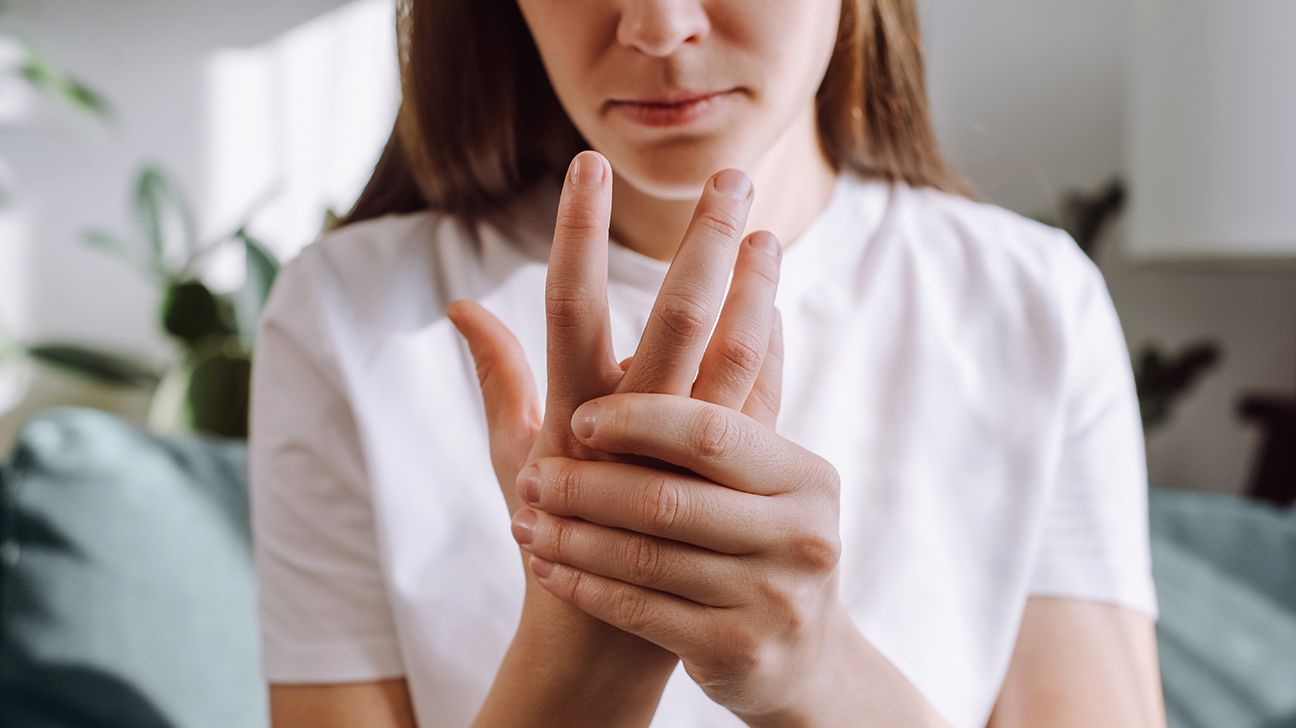Crohn’s causes chronic inflammation, and this can increase your risk of other inflammatory conditions like arthritis. However, the link between Crohn’s and joint pain is complex.

The exact cause of Crohn’s disease isn’t known, but this inflammation of the digestive tract involves the immune system mistaking harmless substances, like food, beneficial bacteria, or the intestinal tissue itself, as threats. It then overreacts and attacks them.
Sometimes, this overreaction can cause problems in other parts of the body, like the joints. This is why joint pain is relatively common in folks with Crohn’s.
Crohn’s disease also has a genetic component — in other words, people with particular gene mutations are more susceptible to Crohn’s disease.
If you have Crohn’s disease, you may have a higher risk for two conditions that cause joint pain: arthritis and arthralgia. The key difference here is that arthritis causes pain alongside inflammation, while arthralgia causes this pain without inflammation.
Inflammation from arthritis can make your joints painful and swollen. It’s pretty common, affecting up to 46% of those with inflammatory bowel disease (IBD), the umbrella term for Crohn’s disease and ulcerative colitis.
Arthritis that occurs with Crohn’s disease is a bit different from regular arthritis because it starts at a younger age. The following are the types of arthritis that can occur in people with Crohn’s disease:
Peripheral arthritis
A majority of the arthritis that occurs in people with Crohn’s disease is called peripheral arthritis. This type of arthritis affects the large joints, such as those in your knees, ankles, elbows, and wrists.
The joint pain typically occurs at the same time as stomach and bowel flare-ups. However, it’s important to note that this type of arthritis typically doesn’t result in any joint erosion or lasting damage to the joints.
Ankylosing spondylitis and sacroiliitis
Finally, a small percentage of people with Crohn’s disease will develop a more serious condition called ankylosing spondylitis (AS). This progressive inflammatory condition affects your spine’s sacroiliac joints, which are the joints linking your pelvis and lower spine.
Symptoms include pain and stiffness in your lower spine and near the bottom of your back near the pelvis.
Some people may even have symptoms of AS months or years before their Crohn’s disease symptoms appear. This type of arthritis can lead to permanent damage.
Enthesitis and dactylitis
Some people with Crohn’s disease develop
If you have aching in your joints without swelling, then you have arthralgia. Roughly 2–35% of people with IBD have arthralgia at some point in their lives.
Arthralgia can occur in many different joints throughout your body. The most common places are your knees, ankles, and hands. When arthralgia is caused by Crohn’s, it doesn’t cause damage to your joints.
It can be tricky to tell if your joint pain is caused by an intestinal condition like Crohn’s disease. No single test can tell you with certainty, but there are some signs to look out for.
Doctors can run a blood test to check for inflammatory markers associated with ankylosing spondylitis. This isn’t fully diagnostic, but it can give clues as to what’s causing your joint pain. Your doctor can also order imaging tests like X-rays and MRIs.
The stomach problems that come with Crohn’s disease may become an issue long before the disease leads to joint pain.
Normally, doctors would recommend using nonsteroidal anti-inflammatory drugs (NSAIDs) like aspirin (Bufferin) or ibuprofen (Motrin IB, Aleve) to relieve joint pain and swelling. However, NSAIDs aren’t recommended for people with Crohn’s disease.
They can irritate your intestinal lining and worsen your symptoms. For minor pain, your doctor may recommend using acetaminophen (Tylenol).
Several prescription drugs are also available to help with joint pain. Many of these treatments overlap with Crohn’s disease medications, including:
- sulfasalazine (Azulfidine)
- corticosteroids
- methotrexate
- newer biologic agents such as infliximab (Remicade), adalimumab (Humira), and certolizumab pegol (Cimzia)
In addition to medication, the following at-home techniques might help:
- resting the affected joint
- icing and elevating the joint
- doing certain exercises to reduce stiffness and strengthen muscles around joints that can be prescribed by a physical or occupational therapist
Lifestyle changes
Exercise helps improve the range of motion in your joints and also helps relieve stress. Low impact cardio exercises like swimming, stationary biking, yoga, and tai chi, as well as strength training, may help.
Adjusting your diet may also ease the symptoms of Crohn’s disease, particularly with help from foods that can change the makeup of bacteria in your gut.
Natural remedies
Besides probiotics and prebiotics, you may benefit from taking fish oil supplements. These are high in omega-3 fatty acids, which may reduce inflammation and joint stiffness. However, more research is needed to confirm just how effective fish oil supplements really are.
Acupuncture may also help with the symptoms of both Crohn’s disease and arthritis.
If you’re experiencing joint pain, see your doctor. They may want to perform diagnostic tests to rule out other causes of your pain.
Your doctor may also want to adjust your Crohn’s disease medications. Occasionally, joint pain could be related to side effects of your medication.
Your doctor can recommend a physical therapist to help you develop an exercise program for your joints.
Joint pain for people with Crohn’s disease typically lasts only a short time and usually doesn’t result in permanent damage. Your joint pain will likely improve as your intestinal symptoms improve.
With gastrointestinal symptoms tamed through medication and diet, the outlook for your joints is generally good.
However, if you’ve also received an AS diagnosis, the outlook is more variable. Some people improve over time, while others get progressively worse. With modern treatments, life expectancy for people with AS typically isn’t affected.
